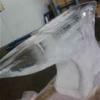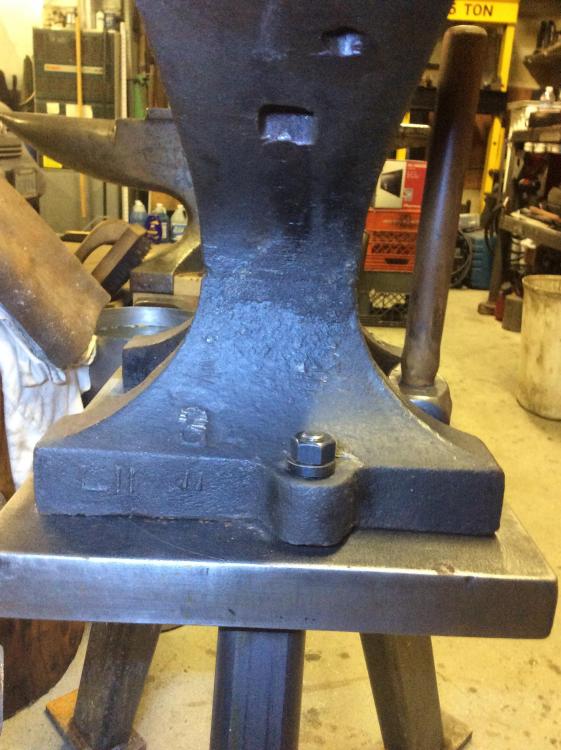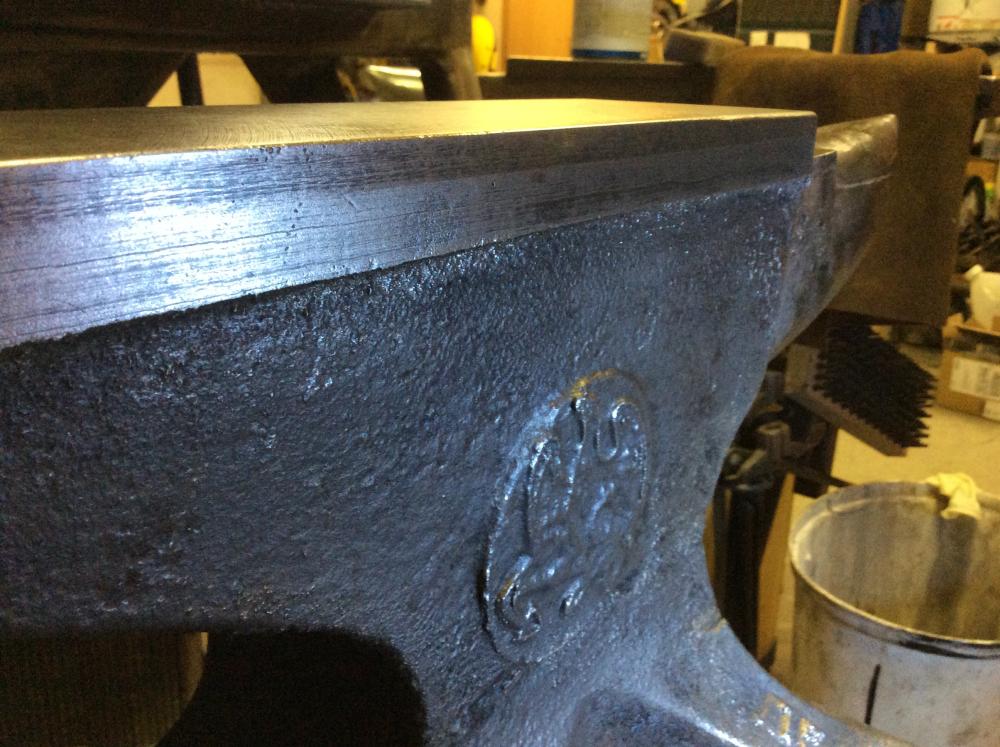-
Posts
648 -
Joined
-
Last visited
Content Type
Profiles
Forums
Articles
Gallery
Downloads
Events
Everything posted by Frozenforge
-

An other ID please
Frozenforge replied to blacksmith-450's topic in Anvils, Swage Blocks, and Mandrels
Trenton anvil. 140lb made in 1903. Appears to be in good condition! -

Looks like a fisher
Frozenforge replied to Timber Ridge Forge's topic in Anvils, Swage Blocks, and Mandrels
Not a Fisher! Take a ball bearing to do a rebound test to see if it is cast steel or an ASO! -

Looking for any possible info on my Trenton please
Frozenforge replied to Darrell Delaney's topic in Anvil Reviews by brand
That serial number would have been manufactured in 1903. Appears to be in good condition -

Purpose of oil in sand for stand legs?
Frozenforge replied to slimpickins's topic in Blacksmithing, General Discussion
Sound deadening, prevents any resonance noise being generated in the legs. -
- 658 replies
-
- Cast anvil
- Fisher & Norris
-
(and 1 more)
Tagged with:
-
Very nice, I was very excited when I started to clean mine and realized it was cosmoline under the dust and dirt. Have not gotten up the courage to radius any of the edges but I have other options for that.
- 658 replies
-
- Cast anvil
- Fisher & Norris
-
(and 1 more)
Tagged with:
-
Steel, then parkerized or treated with a black oxide.
-

Arm and Hammer 95#
Frozenforge replied to twisted_times's topic in Anvils, Swage Blocks, and Mandrels
According to AIA roughly around 1910ish. It has very clear trademark stamping which is pretty cool to see. -

How can I tame my tire hammer?
Frozenforge replied to setlab's topic in Power Hammers, Treadle Hammers, Olivers
Sound like you need to alter the mechanical ratios from the treadle bar to the motor to make it less touchy and give you a larger window for the sweet spot. Beats per minute, take a 10 second video while at full speed, count the hits and multiply by 6. -
One important thing to learn from alot of these stories is the number of times the portabe extinguisher just knocked the fire down and gained time for the fire dept to get there. So 1st priority is still to get everyone safe before attempting to put out the fire. I emptied 3 21/2 lb and 2 10lb extinguishers on a vehicle engine compartment fire and kept it from spreading to other vehicles until a small fire truck came. It was still burning and growing when they arrived.
-

Arm & Hammer Anvil 41748 production year
Frozenforge replied to Farmall's topic in Anvils, Swage Blocks, and Mandrels
41748 would be somewhere between 1923 and 1935 according to AIA -
A11742 or 8 should be 1899
-

Found a 50lb Peter Wright Anvil
Frozenforge replied to JRMo's topic in Anvils, Swage Blocks, and Mandrels
Can only get a date range on Peter Wright anvils. This one was made between 1885 and 1910 according to AIA -
We have Hysol structural adhesives at work used for bonding aluminum aircraft sheetmetal structures together that replace riveting them, really strong stuff. Takes heat and patience to try and break the bond or it just tears the sheetmetal. Usually 24 hr cure and 7 days full strength. However they have a 1 year shelf life and run anywhere from $150 to $400 per quart!
-
As Charles said while cast iron is not ideal it is still usable you just need to be aware of the inherent weaknesses of a cast iron. Only work hot metal, don't get too crazy with a sledge hammer on it, especially if your working out on the heel or tip of the horn. Since you got it cheap you can try it out, learn on it and if you miss a blow or two with the hammer no harm! Have Fun!!
-
Looks to be cast iron which means there has been many companies making these over the years with no identifying marks. They often make them to appear to have a plate on top with the casting mold. A rebound test will tell alot if you want to know.
-
Use it as is and make a portable hole as said before. Will be way less expensive and no risk of damaging the anvil.
-

Anvils: A beginner buyers guide
Frozenforge replied to Everything Mac's topic in Anvils, Swage Blocks, and Mandrels
Sorry I didn't clarify earlier that I'm pretty sure Hay Budden produced this under the Hercules name. That serial number would be from 1903. At that time Hay Budden anvils were a 3 piece design, the base which went about halfway up the base, the upper body and the faceplate. Around 1908 they went to a 2 piece design with no face plate. The 22 is an inspection mark. (Richard Postman and his fine book deserves credit for this knowledge) If it still rings when struck indicates that the remaining face plate and the rest of the anvil is structurally sound. Unless you are a competent welder or know one that will donate their time it probably will be too expensive to pay for the correct repair to be done. I don't know where you are but I have read about there being anvil repair clinics hosted by the local blacksmith groups. -

Anvils: A beginner buyers guide
Frozenforge replied to Everything Mac's topic in Anvils, Swage Blocks, and Mandrels
The face of earlier Hay Budden anvils was a seperate piece of alloy steel that was forge welded on. Sometimes the forge weld failed over time and that area of the face would crack and fall off as it appears has happened to that anvil. Look for a serial number on the bottom edge under the horn. We can provide a date and know the anvils construction method. Did you test with a bearing on the left over raised part? When you say it rebounded well did you eyeball it? Sometimes people tend to throw the bearing at the surface which results in a false reading. If you think you need an accurate reading get a ruler and drop the bearing from 10 inches and see how hight the first bounce is. 9" bounce would be 90%, 5" would be 50%. -

Anvils: A beginner buyers guide
Frozenforge replied to Everything Mac's topic in Anvils, Swage Blocks, and Mandrels
Looks like a good candidate for the Gunther repair if it can be obtained for cheap enough. The area where the face used to be appears to be fairly flat and the edges have not been pounded away. -

Little anvil - new to me
Frozenforge replied to John in Oly, WA's topic in Anvils, Swage Blocks, and Mandrels
It looks to be forged steel by the seperation line on the counterweight in the last image. I believe most forged steel cranks are 4340 steel, tough but not particularly hard. -

is this chipping a real concern ?
Frozenforge replied to JT's topic in Anvils, Swage Blocks, and Mandrels
The chipping no problem, the crack between the chips problem. I couldnt see the crack on my phones screen! -

is this chipping a real concern ?
Frozenforge replied to JT's topic in Anvils, Swage Blocks, and Mandrels
No.


